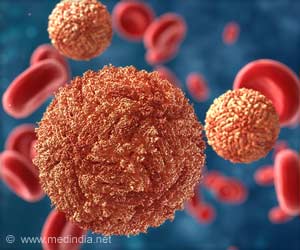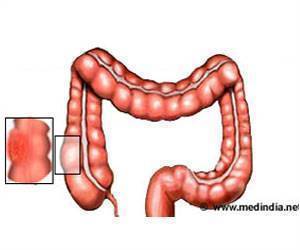A new mechanism has been identified by scientists that is involved in normal repression of the p53 protein.
A new mechanism has been identified by scientists from the Wistar Institute in Philadelphia and The Vienna Biocenter in Austria that is involved in normal repression of the p53 protein which is the most important molecule for the control of cancer in humans.
The new molecular pathway described in the study suggests intriguing approaches to diagnosing or intervening in the progression of many types of cancer. A report on the team's findings will be published online November 15 in the journal Nature."The p53 protein is vital for controlling cancer throughout the body," says Shelley L. Berger, Ph.D., the Hilary Koprowski Professor at The Wistar Institute and senior author on the study. "The new mechanism we describe, driven by a previously unknown enzyme, represses the p53 protein when its activity is not needed.
"What we're looking at now is the possibility that this enzyme, if over-expressed or over-active, might interfere with p53's normal tumor suppressor function and perhaps cause cancer. If that's the case, then we could develop drugs to inhibit the enzyme that would have the effect of freeing p53 to do its job of suppressing cancer. Unusually high levels of the newly identified enzyme might also be useful as a diagnostic marker for cancer."
Responsible for tumor suppression throughout the body, the p53 protein has been found to be mutated and dysfunctional in more than half of human cancers. When working properly, p53 acts by binding to DNA to activate genes that direct cells with damaged DNA to cease dividing until the damage can be repaired. Cells with such damage include cancer cells, since all cancers track to genetic flaws of one kind or another, whether inherited or acquired. If repairs cannot be made, p53 commands the cells with damaged DNA to self-destruct so they are no longer a danger to the body.
This powerful ability of the p53 protein to shut down cell division and induce cell death points to why the availability of a repressive mechanism such as the one outlined in the new study might be crucial for cellular survival.
"You can imagine that if the p53 protein were present at all times and able to bind to DNA, cells would be in big trouble," Berger explains. "They wouldn't be able to divide, and they'd die. We think this new mechanism may be a way for the cell to keep p53 turned off but present, ready to be activated if the DNA should be damaged."
Advertisement
"The ability to bind to DNA is critical for p53's function," says Jing Huang, Ph.D., one of the study's two lead authors. "What we found was that methylation at the site we identified prevents p53 from binding to DNA, which also explains why it's a repressive modification."
Advertisement
With histones, methylation is well recognized as a regulatory mechanism, but the fact that other proteins are also be modified in the same way is a relatively new observation. Berger believes that scientists will likely find this type of regulatory mechanism at work in many other protein systems over the next few years.
Interestingly, only one other study has shown a role for methylation in regulating p53. In that study, a methyl group added to a specific site on p53 called K372 was shown to activate the tumor-suppressor molecule rather than repress it.
The site identified in the current study, dubbed K370, is adjacent to that first site. An additional finding of note is that the two sites interact closely.
"We found that there's important crosstalk between the two sites, but only in one direction," Huang says. "If the previously identified site is already methylated, the site we found cannot be methylated. But the reverse is not the case."
Source-Eurekalert
NLA







